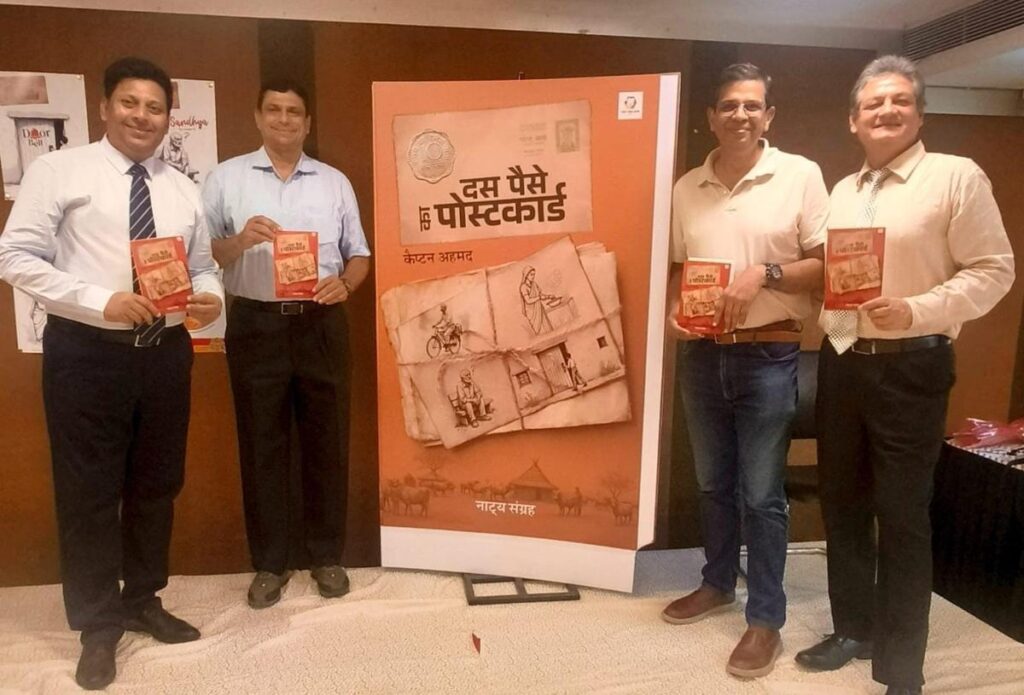Category: Literature & Culture | Books & Authors | Indian Heritage
Published by: IndianCurrentAffairs.com
Date: July 2025
🖋️ New Book ‘Das Paise ka Postcard’ Rekindles Nostalgia of India’s Letter-Writing Era
In an age ruled by instant messaging and digital notifications, author Ashok Chopra’s latest book, ‘Das Paise ka Postcard’, brings readers back to a time when a humble postcard held emotions, memories, and the rhythm of everyday life.
The book, published in mid-2025, is receiving widespread praise for its vivid storytelling and celebration of India’s once-ubiquitous communication medium—the postcard.
📚 About the Book
Das Paise ka Postcard is not just a collection of stories—it’s a tribute to handwritten communication, cultural memory, and the lost charm of slow, meaningful correspondence.
Key Features:
- Narrative Style: A mix of personal anecdotes, fictional tales, and social commentary
- Language: Hindi (with English translation to follow soon)
- Pages: 224
- Genre: Non-fiction/Creative Memoir
- Published by: Penguin India
Chopra creatively uses the postcard as a literary device, drawing connections between forgotten moments, missed conversations, and the simplicity of life before the digital age.
🧓 A Tribute to the Bygone Era
The book’s title refers to the 10-paise postcard that once dominated Indian households. From sending wedding invitations and job updates to writing love notes and grievances to politicians, the postcard was a silent witness to the nation’s emotional landscape.
Ashok Chopra says:
“The postcard was a mirror of India. It carried joy, sorrow, satire, and complaints, all in a few lines. This book is my way of preserving that legacy.”
💌 Why the Postcard Mattered
Until the early 2000s, the Indian postal service distributed millions of postcards every day. Affordable and widely accessible, they became a democratic tool of expression. The book explores:
- Emotional connections in rural and urban India
- The language of brevity and simplicity
- Postcards used as political statements
- Reflections from poets, soldiers, farmers, and students
Each chapter captures a slice of Indian society—often humorous, occasionally heartbreaking, and always deeply human.
📷 Visual Elements Add Depth
The book features scanned copies of real postcards, handwritten notes, and vintage stamps. This visual storytelling enhances the reading experience, making it feel like flipping through an emotional archive.
🗣️ Reader Reactions & Literary Praise
Critics and readers alike are calling the book “emotionally resonant” and “a much-needed cultural reflection.”
Literary critic Shashi Deshpande writes:
“A beautiful blend of memory and meaning. ‘Das Paise ka Postcard’ shows how the smallest things often carry the biggest stories.”
Book clubs and libraries across India are hosting postcard-writing events inspired by the book, reviving interest in analog communication.
✅ Conclusion: A Letter to the Past, a Message for the Future
‘Das Paise ka Postcard’ is more than a book—it’s a cultural time capsule. It reconnects us with the simplicity of life before smartphones and celebrates the written word in its most tactile form. For readers who love India, stories, and nostalgia, this is a must-read.
Stay updated on India’s latest book releases, literary awards, and cultural reflections at IndianCurrentAffairs.com — your gateway to the stories that shape India.Tools
ChatGPT can make mistakes. Check important info. See Cookie Preferences.

